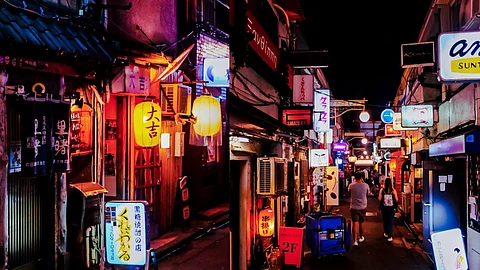
- NEWS
- the EDIT
- COMMENTARY
- BUSINESS
- LIFE
- SHOW
- ACTION
- GLOBAL GOALS
- SNAPS
- DYARYO TIRADA
- MORE

Japan’s red-light districts are a unique blend of tradition and modernity, reflecting the country’s deep cultural history while embracing contemporary entertainment. These districts, known for their vibrant nightlife, offer more than just adult-oriented establishments — they provide a glimpse into a dynamic side of Japanese culture that continues to attract locals and tourists alike.
The atmosphere in these areas is an intriguing mix of neon-lit streets, bustling alleyways, and hidden establishments that range from high-end hostess clubs to traditional Izakaya's.
The history of Japan’s red-light districts dates back to the Edo period when designated pleasure quarters were established to entertain samurai, merchants, and aristocrats.
These areas housed geisha tea houses, brothels, and theaters where traditional performances took place. Over the centuries, the purpose of these districts evolved, and today, they serve as centers for nightlife and entertainment, offering everything from themed bars and karaoke lounges to upscale host clubs and love hotels.
Interestingly, there are cultural parallels between Japan and the Philippines when it comes to entertainment districts. Much like Japan’s Kabukicho, the Philippines has its own lively nightlife hubs, such as Makati’s Poblacion and Manila’s Ermita, where music, dining, and nightlife come together to create a vibrant social scene.
Both cultures emphasize hospitality and the art of entertainment, making nightlife an essential part of urban experiences.
One of the most well-known red-light districts in Japan is Kabukicho in Tokyo’s Shinjuku area. Known as the "Sleepless Town," Kabukicho is famous for its dazzling neon signs, entertainment hubs, and variety of nightlife options.
It is home to themed bars, game centers, host and hostess clubs, and high-end restaurants, making it a top destination for both leisure and exploration.
Similarly, Osaka’s Dotonbori is another nightlife hotspot that mirrors the energy of Manila’s nightlife scene. Known for its bustling streets, street food stalls, and lively entertainment options, Dotonbori attracts Filipinos and other tourists who enjoy its dynamic atmosphere.
The district is also famous for its giant illuminated billboards, reminiscent of the bright lights of Metro Manila’s entertainment districts.
Despite being known for adult entertainment, Japan’s red-light districts offer much more than what their reputation suggests. Visitors can explore a variety of experiences, from late-night ramen shops and historic shrines tucked away in hidden alleys to live music bars and traditional izakaya's that provide a more authentic cultural experience.
Many establishments have strict rules regarding age restrictions and dress codes, emphasizing the balance between exclusivity and hospitality that is deeply rooted in Japanese culture.
Japan has become a favorite destination for many Filipinos, not just for its scenic beauty and advanced technology but also for its rich cultural experiences. The fusion of old and new in districts like Kabukicho and Dotonbori fascinates many visitors, offering a glimpse into Japan’s dynamic entertainment scene.
The warm hospitality, incredible food, and immersive nightlife make Japan a second home for many Filipinos who seek both adventure and familiarity in a country that seamlessly blends tradition with modern indulgences.
For Filipinos, the appeal of Japan's nightlife goes beyond entertainment — it’s about experiencing a culture that values respect, service, and artistry in all aspects of life, whether in a Michelin-star restaurant, a humble izakaya, or a neon-lit street in the heart of the city.
